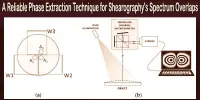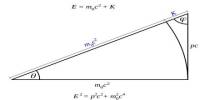Geodynamics is a subject of geophysics that studies the dynamics of the Earth. It aims to comprehend the forces, processes, and movements that change the Earth’s surface and interior over a variety of time scales, from millions of years to seconds. It uses physics, chemistry, and mathematics to comprehend how mantle circulation causes plate tectonics and geological processes such as seafloor spreading, mountain formation, volcanoes, earthquakes, and faulting.
It also aims to investigate interior activity by monitoring magnetic fields, gravity, seismic waves, as well as rock mineralogy and isotopic composition. Geodynamic methods are also used in the exploration of distant worlds.
Overview
Geodynamics is primarily concerned with mechanisms that move materials across the Earth. In the Earth’s interior, movement occurs as rocks melt, distort, and flow in response to a stress field. This deformation can be brittle, elastic, or plastic, depending on the magnitude of the stress and the material’s physical qualities, particularly its stress relaxation time scale.
Because rocks are structurally and compositionally varied and sensitive to changing stresses, multiple types of deformation are frequently observed in close geographical and temporal proximity. When working with geological durations and lengths, the continuous medium approximation and equilibrium stress fields are useful for determining the average response to average stress.
Key aspects of geodynamics include:
- Plate Tectonics: The theory that describes the large-scale motion of the Earth’s lithosphere, which is divided into several plates that move relative to each other. Plate tectonics explains phenomena such as earthquakes, volcanic eruptions, mountain building, and the formation of ocean basins.
- Mantle Convection: Heat from the Earth’s core drives convection currents in the semi-fluid asthenosphere, which lies beneath the lithosphere. These currents are thought to play a significant role in moving tectonic plates.
- Rheology of Rocks: Geodynamicists study the mechanical properties of rocks under various conditions of temperature, pressure, and stress to understand how they deform and flow over geological timescales.
- Gravity and Geoid: Geodynamics also investigates the Earth’s gravity field and geoid (the shape of the Earth’s surface when only influenced by gravity), which provide information about the distribution of mass within the Earth.
- Seismology: The study of seismic waves generated by earthquakes helps geodynamicists understand the structure and composition of the Earth’s interior and the forces acting within it.
Understanding geodynamics is crucial for various applications, including natural hazard assessment (such as earthquakes, tsunamis, and volcanic eruptions), resource exploration (such as oil and gas deposits), and even understanding the Earth’s past climates and environments.
















